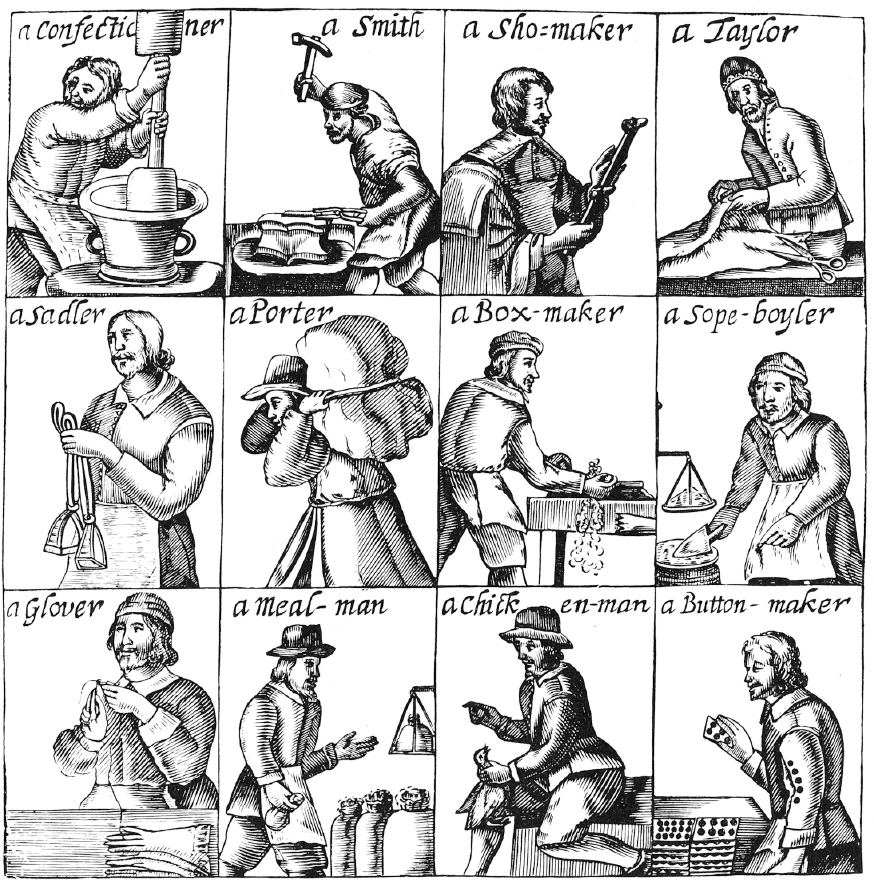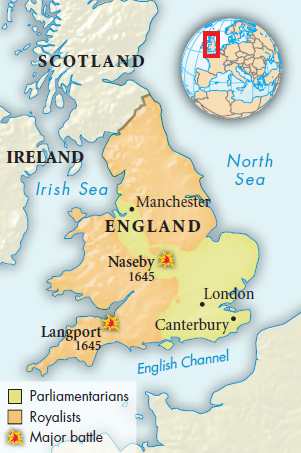A History of Western Society: Printed Page 490
A History of Western Society, Value Edition: Printed Page 503
Religious Divides and the English Civil War
Relations between the king and the House of Commons were also embittered by religious issues. In the early seventeenth century growing numbers of English people felt dissatisfied with the Church of England established by Henry VIII (r. 1509–1547). Many Puritans believed that the Protestant Reformation of the sixteenth century had not gone far enough. They wanted to “purify” the Anglican Church of lingering Roman Catholic elements — elaborate vestments and ceremonials, bishops, and even the giving and wearing of wedding rings.
James I responded to such ideas by declaring, “No bishop, no king.” For James, bishops were among the chief supporters of the throne. His son and successor, Charles I, further antagonized religious sentiments. Not only did he marry a Catholic princess, but he also supported the heavy-handed policies of the archbishop of Canterbury William Laud (1573–1645). In 1637 Laud attempted to impose two new elements on church organization in Scotland: a new prayer book, modeled on the Anglican Book of Common Prayer, and bishoprics. The Presbyterian Scots rejected these elements and revolted. To finance an army to put down the Scots, King Charles was compelled to call a meeting of Parliament in November 1640.
Charles had ruled from 1629 to 1640 without Parliament, financing his government through extraordinary stopgap levies considered illegal by most English people. For example, the king revived a medieval law requiring coastal districts to help pay the cost of ships for defense, but he levied the tax, called “ship money,” on inland as well as coastal counties. Most members of Parliament were not willing to trust such a despotic king with an army. Moreover, many supported the Scots’ resistance to Charles’s religious innovations. Accordingly, this Parliament, called the “Long Parliament” because it sat from 1640 to 1660, enacted legislation that limited the power of the monarch and made government without Parliament impossible.

In 1641 the Commons passed the Triennial Act, which compelled the king to summon Parliament every three years. The Commons impeached Archbishop Laud and then threatened to abolish bishops. King Charles, fearful of a Scottish invasion — the original reason for summoning Parliament — reluctantly accepted these measures.

The next act in the conflict was precipitated by the outbreak of rebellion in Ireland, where English governors and landlords had long exploited the people. In 1641 the Catholic gentry of Ireland led an uprising in response to a feared invasion by anti-Catholic forces of the British Long Parliament.
Without an army, Charles I could neither come to terms with the Scots nor respond to the Irish rebellion. After a failed attempt to arrest parliamentary leaders, Charles left London for the north of England. There, he recruited an army drawn from the nobility and its cavalry staff, the rural gentry, and mercenaries. In response, Parliament formed its own army, the New Model Army, composed of the militia of the city of London and country squires with business connections. During the spring of 1642 both sides prepared for war. In July a linen weaver became the first casualty of the civil war during a skirmish between royal and parliamentary forces in Manchester.
The English civil war (1642–1649) pitted the power of the king against that of the Parliament. After three years of fighting, Parliament’s New Model Army defeated the king’s armies at the Battles of Naseby and Langport in the summer of 1645. Charles, though, refused to concede defeat. Both sides jockeyed for position, waiting for a decisive event. This arrived in the form of the army under the leadership of Oliver Cromwell, a member of the House of Commons and a devout Puritan. In 1647 Cromwell’s forces captured the king and dismissed anti-Cromwell members of the Parliament. In 1649 the remaining representatives, known as the “Rump Parliament,” put Charles on trial for high treason. Charles was found guilty and beheaded on January 30, 1649, an act that sent shock waves around Europe.